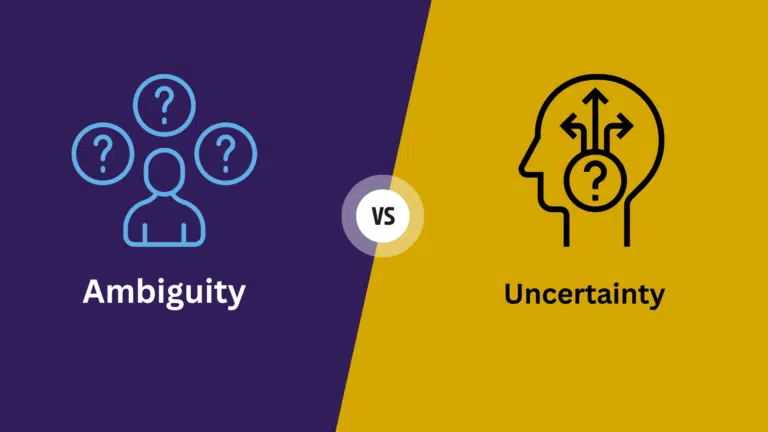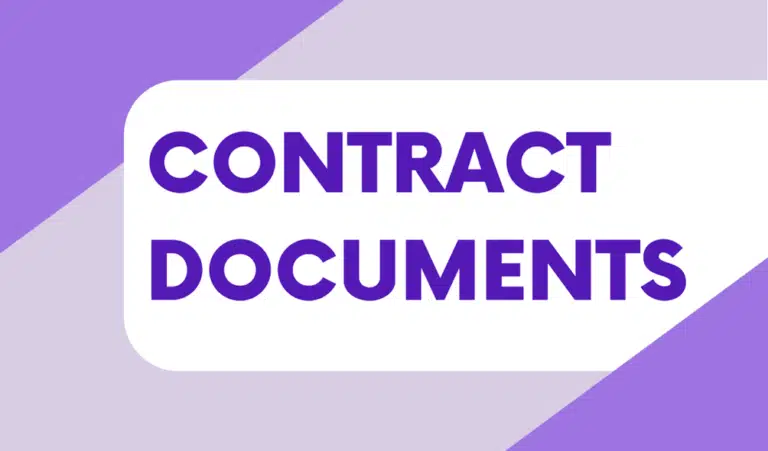I have conducted interviews and participated in various human resource management activities. I have written job descriptions, defined team roles, scheduled development training programs for new and existing employees, and created roles and responsibilities documents.
While developing roles and responsibilities, I extensively used roles and responsibilities templates. These templates make the job easier for HR professionals and help employees understand their roles, as well as their colleagues’ roles in their new or existing organization.
In today’s blog post, I will explain the roles and responsibilities template and its usefulness.
What is a Roles and Responsibilities Template?
The term “role” refers to a position in an organization. An employee can have multiple roles; for example, the project manager can direct the project and serve on the project board. Responsibilities are the tasks that the role performs. Responsibilities are also known as job duties.
Establishing a roles and responsibilities template will ensure that applicants and employees know their responsibilities. It will help define job descriptions for different roles in an organization, clarify ambiguities, avoid conflicts, and ensure that the organization hires employees with the right competencies.
A roles and responsibilities template can include the following elements:
- Role Title
- Role Purpose/Objective
- Key Responsibilities
- Authority/Decision-Making Power
- Reporting Structure
- Required Skills/Qualifications
- Key Performance Indicators (KPIs)
- Key Stakeholders
- Relationships/Interactions with Other Roles
- Training and Development Needs
- Performance Expectations/Standards
- Terms of Employment/Contractual Details (if applicable)
After developing the roles and responsibilities template for each role, you can post the advertisement to hire candidates on your company job boards, on job portals, and with third-party consultants, or you can forward it directly to your contacts. You must have this template ready when you want to create a new position or when you need to fill an existing role.
We used to publish these templates with procurement documents as part of RFQ documents, so bidders could understand our human resources requirements and submit suitable resumes.
These documents also help management and other stakeholders understand each employee’s responsibilities and the tasks of each employee.
The Importance of Defining Roles and Responsibilities
The benefits of defining employees’ roles and responsibilities are:
- Clarification: Outlining each employee’s duties and expectations clearly will help reduce confusion and minimize the likelihood of tasks falling through the cracks.
- Alignment: Templates clearly define roles, ensuring that everyone understands their place within the organization and that their goals align with the organizational goals.
- Efficiency: With predefined responsibilities, employees can work more efficiently because members know exactly what they are supposed to do, and they can focus on their core tasks.
- Accountability: Templates create a framework for accountability and make it easy to track performance and address issues if responsibilities are not met.
- Onboarding and Training: Templates are valuable tools during the onboarding process. They help new team members understand their roles quickly and integrate themselves into the organization effectively.
- Performance Management: roles and responsibilities templates establish clear benchmarks and expectations. They provide a basis for evaluating individual and group performance.
- Collaboration: Once roles and responsibilities are clear, there will be no conflicts, and all employees will cooperate with each other.
- Setting Expectations for New Recruits: Templates set the right expectations for new recruits and help them settle into their new environment. New members can go through their roles and responsibilities, as well as others’ roles and responsibilities, to know what they are expected to do.
- Streamlining the Hiring Process: Employers know who they need to hire, and applicants know whether they should apply for these roles or not. This clarity smoothens the hiring process.
Defining Roles and Responsibilities for Employees
Defining roles and responsibilities templates is easy if you follow the right steps. You can find old templates in your records and update them to reflect current market conditions. If your organization doesn’t have them, then you can create them from scratch.
The following guidelines can help you develop robust roles and responsibilities templates for your organization:
- Conduct Brainstorming Sessions: First, gather your team members and other experts in your organization and conduct a brainstorming session to define the roles and responsibilities. This exercise will provide enough details and ideas to develop a sound template.
- Work Collaboratively: Developing roles and responsibilities is a collective task, and you will need input from employees who are working in the same or similar roles. Collaboration will ensure that all stakeholders provide input, and it will help you get their buy-in.
- Ask for Feedback: After completing the brainstorming session, you can compile the input and create a draft version of the roles and responsibilities template. Send this version to all stakeholders for their feedback. After getting the feedback, update the template.
- Review Job Portals: Job portals always have vacancies for all types of positions. You can visit these sites, search for the roles or titles, and find detailed responsibilities for each of them. You can collect these details and use them for your template.
- Remove Overlaps: Similar roles can often have the same responsibilities. Look for overlaps and remove them from the template. However, remember that job titles can occasionally require overlapping responsibilities. For example, a procurement officer and a purchase engineer can have some common assignments. Don’t delete these details!
- Get Approval: After finalizing the template, you will submit it to management for approval. Once approved, you will upload these templates to your website, and any other places as required.
How to Write a Roles and Responsibilities Template
A roles and responsibilities template is a key document that helps employees understand their roles and responsibilities. While developing the template, remember to ensure that each role is unique and defined clearly. Although some responsibilities may overlap, the roles should still be unique.
You can follow these steps to write a roles and responsibilities template:
- List the Roles: Your organization may have dozens of roles. You must prepare a list of roles for which you want to write responsibilities.
- List the Title and Position: Start by clearly stating the position’s title, and the department that it belongs to.
- Write the Job Details: This is the key section. Provide details on the roles and responsibilities. Provide some examples (e.g., responsible for overseeing quality issues). List all responsibilities that the roles are expected to perform.
- List the Qualifications and Experience: This is important. You must provide details on educational qualifications and experience (e.g., the candidate must have a mechanical engineering degree and 10 years of experience constructing pipelines).
- List the Certification and License: Some roles require certification, due to legal requirements. Remember to include these requirements (e.g., Professional Engineer License or PMP certification).
- List Any Other Considerations: Here, you can mention other considerations (e.g., whether the job requires living in a remote area, whether it is short term or long term, what facilities it will provide, etc.).
Examples of Roles and Responsibilities Documents
Now, I will share a few examples of the roles and responsibilities of four positions.
Example 1: Job Role – Project Manager
As a project manager, you will oversee all project management aspects. You will lead cross-functional teams, manage resources, and ensure that projects are completed on time and within budget.
Job Responsibilities
- Develop and execute project management plans (e.g., budgets and resource allocations).
- Lead and manage cross-functional project teams to achieve project objectives and deliverables.
- Monitor project progress, identify risks, and develop risk response strategies to ensure project success.
- Communicate regularly with project stakeholders to provide project status updates, address concerns, and manage expectations.
- Manage project budgets, track expenses, and ensure that projects are completed within approved financial parameters.
- Ensure that project deliverables meet quality standards and comply with relevant regulations and guidelines.
- Act as a primary point of contact for internal and external project-related inquiries and escalations.
Requirements
- Bachelor’s degree in engineering or a relevant field
- 10 years of experience as a project manager
- Solid understanding of project management methodologies (e.g., Agile, Waterfall, and Hybrid)
- Proficiency in project-management software (e.g., Microsoft Project, Asana, or Jira)
- Project management certification (e.g., PMP, PRINCE2) preferred
Example 2: Job Role – Procurement Officer
You will be responsible for managing the procurement process within the organization, from sourcing suppliers to negotiating contracts and ensuring timely delivery of goods and services. You will collaborate with internal stakeholders to understand their procurement needs, identify suitable suppliers, and obtain competitive bids. You will be maintaining vendor relationships, monitoring supplier performance, and implementing procurement best practices to optimize costs and improve efficiency.
Job Responsibilities
- Identify potential suppliers, conduct market research, and evaluate vendor capabilities to ensure alignment with procurement requirements.
- Solicit and evaluate bids, quotations, and proposals from vendors and negotiate favorable terms and conditions to achieve cost savings and value.
- Manage procurement process from requisition to delivery, thereby ensuring compliance with organizational policies, procedures, and regulatory requirements.
- Maintain accurate records of procurement transactions (e.g., contracts, purchase orders, and supplier agreements) by using procurement-management systems or databases.
- Monitor supplier performance, evaluate delivery schedules and quality of goods and services, and address any issues or discrepancies quickly.
- Develop and maintain strong relationships with key suppliers by promoting open communication and resolving conflicts or disputes, as necessary.
Requirements
- Bachelor’s degree in business administration, supply chain management, or a related field
- Five years of experience in procurement, purchasing, or supply chain management, preferably in a similar industry or organization
- Sound knowledge of procurement principles, practices, and regulations (e.g., contract law and vendor management)
- Proficiency in procurement software and tools (e.g., ERP systems, eProcurement platforms, and Microsoft Excel)
- Certification in procurement or supply chain management (e.g., CIPS, CPSM) is preferred
Example 3: Job Role – Data Operator
You will be responsible for maintaining accurate and up-to-date data records, inputting, verifying, and managing data in databases and other information systems, ensuring data integrity and consistency. You perform data entry tasks with a high level of accuracy and attention to detail while adhering to established data management procedures and standards.
Job Responsibilities
- Input and update data into databases and information systems accurately and efficiently.
- Verify accuracy and completion of data entries by reviewing source documents and making necessary corrections or adjustments.
- Maintain data integrity and consistency by adhering to established data-entry procedures and quality assurance standards.
- Perform regular data cleaning and validation to identify and correct data errors or inconsistencies.
- Generate reports and extract data from databases as requested by management or other stakeholders.
- Organize and maintain physical and electronic files, thereby ensuring that data records are properly archived and accessible.
Requirements
- High school diploma or equivalent; additional education or training in data entry or office administration is a plus
- Three years of experience in data entry or a similar role
- Proficiency in data-entry software and tools (e.g., Microsoft Excel, Google Sheets, or database management systems)
- Excellent typing skills and familiarity with alphanumeric data-entry techniques
- Good verbal and written communication skills
Example 4: Job Role – Software Developer
You will be responsible for designing, developing, and maintaining software applications to meet the organization’s needs. You will also be involved in testing, debugging, and optimizing software code to ensure the applications’ quality, performance, and scalability.
Job Responsibilities
- Analyze user requirements and translate them into software design specifications and technical solutions.
- Develop software applications and features using programming languages (e.g., Java, Python, C++, or JavaScript) and frameworks (e.g., React, Angular, or Spring).
- Write clean, efficient, and maintainable code by following coding standards and best practices.
- Collaborate with cross-functional teams (e.g., software engineers, designers, and product managers) to deliver high-quality software solutions.
- Conduct unit and integration testing to ensure reliable, secure, and functional software applications.
- Debug and troubleshoot software issues by identifying root causes and implementing timely solutions to resolve them.
- Perform code reviews to ensure quality, consistency, and adherence to coding standards.
Requirements
- Bachelor’s degree in computer science or software engineering
- Six years of experience in software development
- Proficiency in one or more commonly used software-development programming languages and frameworks
- Familiarity with version-control systems (e.g., Git) and code-collaboration tools (e.g., GitHub or Bitbucket)
- Knowledge of software development tools and environments (e.g., IDEs, build systems, and deployment pipelines)
- Understanding of web development concepts (e.g., HTML, CSS, and RESTful APIs) for front-and-back-end development.
Roles and Responsibilities Template Objectives
The objectives of the roles and responsibilities template are:
- Define employees’ roles and duties.
- Identify gaps in assignments and responsibilities.
- Define how the project team will interact with other resources and departments.
Roles and Responsibilities Templates
Now, I will share with you some templates of roles for the responsibility document:
Roles and Responsibilities Template Benefits
- Avoids Role Conflicts: Tasks become simpler when employees know what they need to do. The roles and responsibilities template helps establish expectations. It’s a useful tool for holding people responsible at all levels and avoiding the “blame game.”
- Encourages Responsibility: The roles and responsibilities template is the most effective approach to ensuring that employees are accountable for their decisions and that the right team members are recognized for the positive or negative outcomes of their actions.
- Makes Task Management Easier: Once tasks have been assigned, it is possible to monitor the employees’ workload. If they are overloaded, then assignments and tasks can be reallocated. By keeping track of their workload, you can ensure that they are working efficiently.
Frequently Asked Questions
Q1: How do I structure roles and responsibilities?
You must define the objectives, identify roles, and assign responsibilities to each role. Establish accountability and authority, communicate expectations effectively, and regularly review and adjust the template if required. This structured approach ensures clarity, accountability, and efficiency within organizations.
Q2: How do I create a roles and responsibilities chart?
First, list all the roles in your organization. Define the key objectives and tasks for each role. Assign responsibilities to individuals based on their skills and expertise. Outline reporting lines and decision-making authority. You can enter this information in a table or create a visual diagram, with roles listed vertically and responsibilities listed horizontally. The roles and responsibilities template layout can be text-based, graphical, or a combination of both.
Q3: What are roles and responsibilities in simple terms?
A role is an employee’s position, title, or place in a team and responsibilities are the duties and tasks assigned to a role.
Q4: How do I write a job description that will attract applicants?
Start your job description by highlighting the company’s mission and culture. Outline the role’s responsibilities and expectations, and emphasize opportunities for growth. Use engaging language to describe the desired skills and qualifications, while also being transparent about challenges. Show benefits and perks to attract top talent.
Q4: Should I include a salary or other remuneration in a job description?
It depends on your organization’s policy and industry norms. If transparency is valued and the organization is comfortable disclosing salary ranges, it can attract candidates who align with the compensation offered. However, omitting salary details often allows flexibility in salary negotiation and prevents biases.
Summary
A well-defined roles and responsibilities template will smoothen the hiring process for recruiters and applicants because the expectations of all parties will be clear. It will also smoothen the work environment by removing ambiguous task assignments and schedule priorities, thereby enhancing productivity and reducing conflicts.

I am Mohammad Fahad Usmani, B.E. PMP, PMI-RMP. I have been blogging on project management topics since 2011. To date, thousands of professionals have passed the PMP exam using my resources.






